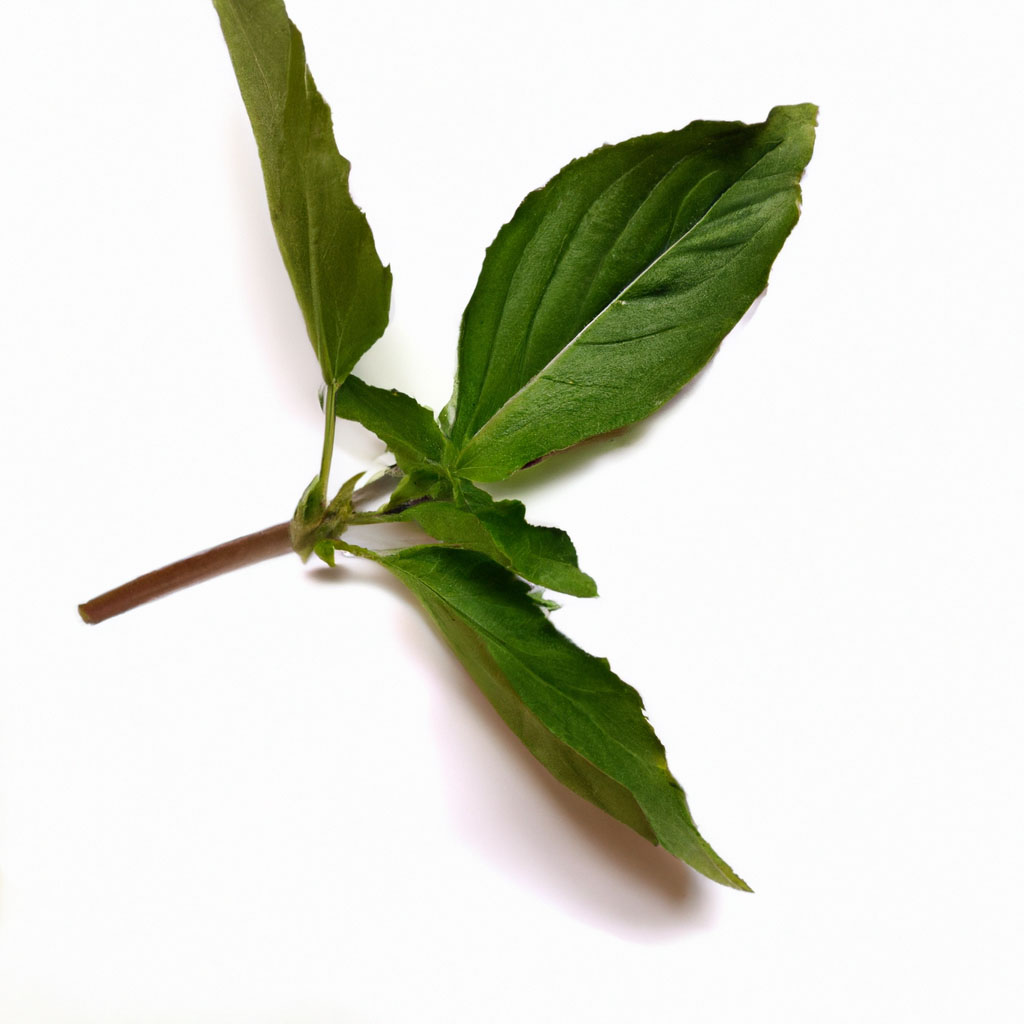Botanical Name: Ocimum basilicum var. thyrsiflora
Also Called: Bishop’s Weed, Carom
Thai Basil’s distinctly anise-like flavor holds up against the high-heat and spicy dishes. It’s a cousin of sweet basil and is a fragrant and robust herb central to the culinary traditions of Southeast Asia. Known for its distinctive flavor and striking appearance, Thai Basil stands out with its purple stems and small pointed leaves. Its spicy, slightly sweet flavor makes it a staple in Thai, Vietnamese, and Cambodian dishes.
It thrives in the climates of Thailand, Laos, and Vietnam, where it adds depth and a sweet aroma to stir-fries, curries, and soups. Introduced to the West in the late 20th century, it’s now a staple in many fusion dishes and cocktails.
Thai Basil has a bolder and spicier flavor than sweet basil, with a pronounced licorice and anise undertone complemented by a peppery kick. Its aroma is intensely herbal, with hints of mint and clove, making it a dynamic addition to various dishes. The vibrant green leaves and purple stems add a visual appeal, often used as both a cooking ingredient and a garnish.
Thai Basil is indispensable in Southeast Asian cuisine, bringing its unique flavor to iconic dishes. In Thai cooking, it is a key ingredient in Pad Kra Pao (Thai basil stir-fry), where its peppery aroma enhances meats, tofu, or seafood cooked with garlic, chiles, and soy-based sauces.
In Vietnamese cuisine, Thai Basil is a signature accompaniment to pho, the fragrant noodle soup, where its fresh leaves are torn and added just before eating to release their aroma. It also complements fresh spring rolls, adding a burst of flavor to the light, crisp vegetables and rice paper.
In Cambodian cooking, Thai Basil is featured in soups, stews, and curries, where its bold notes balance the richness of coconut milk and the heat of spices. Beyond traditional uses, Thai Basil is increasingly popular in fusion dishes like basil-infused cocktails, herbal teas, or pizzas and pasta.

